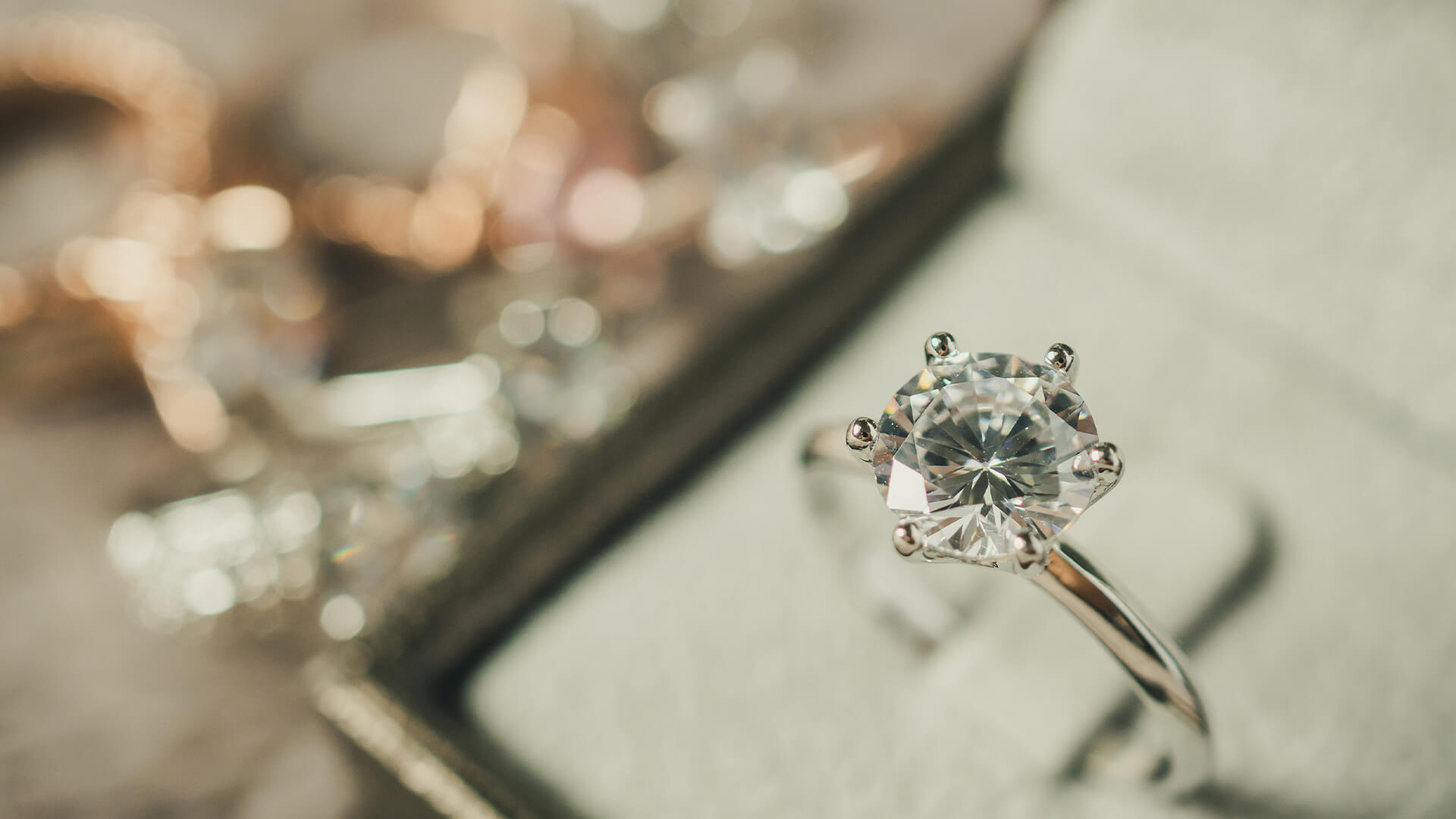
A diamond engagement ring symbolizes the enduring love and devotion two people share for one another, and its radiant luster and timeless beauty have made it the most popular gemstone when it comes to popping the question.
Characterized by its strength and ability to withstand extreme pressure, a diamond perfectly represents the strong bond and commitment that are present in every good marriage.
With all the different types of engagement rings available the process of selecting the perfect one can seem overwhelming. Whether you are looking for a bridal set with an engagement ring and wedding band or are in the market for a single solitaire, this article will help you narrow your choices by outlining some essential information you need to know before purchasing a diamond engagement ring.
The 5 C’s of Diamonds
To ensure you buy a good quality ring, such as the ones at halo engagement rings, it pays to do your research first and learn about the essential criteria used by jewelers to assess the value and quality of a diamond. Known as the ‘5 Cs’ of color, clarity, cut, carat and certification, keeping these five factors in mind when shopping for the perfect ring will help you make the right selection.
Clarity
A diamond’s clarity determines the presence of something known as ‘inclusions’ or imperfections that are contained within its structure. Inclusions are essentially other minerals or elements that become included in the diamond during its formation.
These are formed from the heat and extreme pressure that the carbon atoms undergo in the process of becoming a diamond. Almost all diamonds contain some inclusions, and it is extremely rare to find a perfectly flawless diamond. Less than 0.5% of diamonds fall within this category.
Inclusions can appear in many different forms with the most common being small crystals, feathers, pinpoints, cavities and wisps which may be invisible to the naked eye yet can affect a diamond’s brilliance and durability. The fewer visible inclusions there are in a diamond, the greater its clarity, desirability and value.
The clarity of a diamond is assessed according to a chart that grades the stone based on the number, size and location of the inclusions in it. The diamond clarity grading scale ranges from Flawless (FL) to Included (I3) as follows:
- FL: Flawless
- F: Internally Flawless
- VVS1: Very, Very, Slightly Included 1
- VVS2: Very, Very, Slightly Included 2
- VS1: Very, Very, Slightly Included 1
- VS2: Very, Very, Slightly Included 2
- SI1: Slightly Included 1
- SI2: Slightly Included 2
- I1: Included 1
- I2: Included 2
- I3: Included 3
The more clarity a diamond has, the greater its value. When choosing your diamond ring, keep in mind that any inclusions should not affect the structural integrity of the diamond nor be visibly apparent to the naked eye.
Cut
The cut of a diamond is often said to be the most important of the five factors that determine its quality and value. This is because it affects the physical beauty of the stone and its ability to sparkle. A poorly cut diamond with flawless clarity will still appear dull and lackluster.
The cut of a diamond refers to the proportion of its dimensions, symmetry and polish. A well-cut diamond will interact well with light and be proportioned in such a way that each of its facets will allow the most white light to enter and be reflected back by splitting it into a brilliant array of rainbow colors.
Its symmetry measures how well each of its facets and angles are aligned and arranged which determines how well it allows light to travel through and back to the eye. The polish of a diamond refers to the smoothness of its facets and the precision of the cut which again impacts the ability of light to pass through it. The polish and symmetry of a diamond are together known as its ‘finish.’ The cut of a diamond will determine its three unique attributes of brilliance, fire and scintillation.
- Brilliance: This is the total amount of light reflected by a diamond
- Fire: This measures the prism-like dispersion of light into the colors of the rainbow
- Scintillation: These are the flashes of light or the sparkle produced by a diamond
Diamond cutting grades range from Excellent, Very Good, Good, Fair, and Poor. The better the cut of a diamond the greater its overall beauty.
Color
Another important factor which influences the beauty and value of a diamond is its color. The closer this is to being colorless the better as the color of a diamond will impact its transparency and ability to sparkle. This is why the color of a diamond actually measures its absence of color on a scale ranging from letters D (colorless) to Z (light yellow or brown).
D-rated diamonds are absolutely colorless and are also extremely rare. The closer a diamond is to reaching this grade, the greater its value, beauty and rarity. The more a diamond is graded towards the end of the scale the more it will show signs of yellow, brown or gray tints to it. Diamonds are graded on a color scale as follows:
- D-F Rating: Colorless
- G-J Rating: Near Colorless
- K-M Rating: Faint Color
- N-R Rating: Very Light Color
- S-Z Rating: Light Color
In general, diamonds are not used for jewelry purposes if they have a color rating between N to Z.
Carat
The carat of a diamond is often mistaken to be its size, but weight is more accurate. A one carat diamond is equivalent to 200 milligrams in weight. This is then subdivided into 100 points to create a precise way of measuring diamonds to the hundredth decimal place. For example, a 25-point carat diamond is referred to as a 0.25 carat or a quarter of a carat diamond. Similarly, a 50-point carat stone is equal to a 0.5 carat or half a carat diamond.
As the carat of a diamond increases, so too does its value. However, the increase is disproportional meaning that a two-carat diamond is more than twice the price of a one carat diamond. This is largely due to the fact that larger carat stones are more scarce than smaller ones.
Certification
This refers to the system of certification created by the Gemological Institute of America (GIA) which gives a diamond an overall rating based on the four criteria listed above. Several accredited gemological laboratories can certify the quality of a diamond assuring you as to its value and verify it is what the seller claims.
In addition to this assurance of authenticity, certifying a diamond is also a great way to preserve the value of your investment as many investors, buyers and insurers do not value diamonds as highly if they are not certified. This makes it easier to sell if you decide to do so in the future.
Knowing the 5 C’s of a diamond can allow you to confidently begin your search for the perfect engagement ring based on the design and style you or your partner prefer. Here are some of the most common and time-tested types of engagement ring cuts to familiarize yourself with:
- Marquise Cut
- Emerald Cut
- PrincessCut
- Round Cut
- Heart Cut
- Pear Cut
- Oval Cut
- Radiant Cut
- Cushion Cut
- Asscher Cut
Now that you know the fundamentals of picking out a diamond, you can begin shopping for the perfect engagement ring.




















